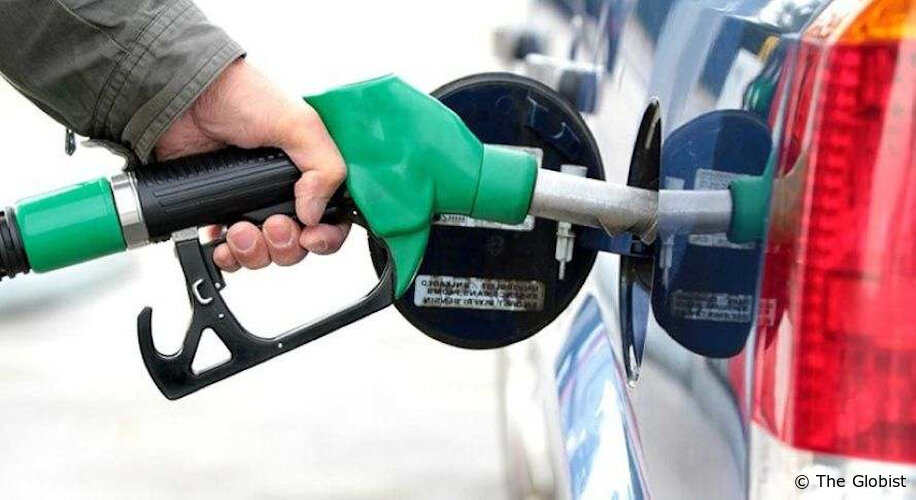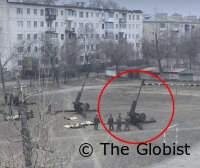New EU fuel marking: questions and answers

New EU fuel marking: questions and answers
1. What are the new EU fuel labels and what do they mean? What changes on 12 October?
As of 12 October 2018, throughout all 28 European Union member states, the EEA countries (Iceland, Lichtenstein and Norway), the former Yugoslav Republic of Macedonia, Serbia, Switzerland and Turkey, a new common and harmonised set of fuel labels will be compulsory for use on newly produced vehicles and at all filling stations dispensing petrol, diesel, hydrogen, compressed natural gas, liquefied natural gas or liquefied petroleum gas fuels, as well as at vehicle dealerships.
These labels will be placed on the nozzles of all filling pumps, on the pumps themselves and in the immediate proximity of the fuel filler flap/cap of newly produced passenger cars, mopeds, motorcycles, tricycles and quadricycles, light commercial vehicles, heavy-duty commercial vehicles and buses and coaches. They should also appear in the vehicle owner's manual, and they may appear in the electronic handbook available via a vehicle's infotainment centre.
2. Why are these new labels needed?
The growing diversity of fuels available on the market implies an increasing need to provide drivers with clear and straightforward information on the compatibility of the fuels sold at filling stations and on their vehicles. The increasing diversity of fuel denominations and brands can sometimes lead to confusion for consumers and businesses, especially in a free-movement area such as the European Union. That is why Directive 2014/94/EU on the deployment of alternative fuels infrastructure requires EU member states and EEA states to improve the information given to consumers who are faced with such a choice of fuels for their vehicle. In order to help consumers select the appropriate fuel for their vehicles throughout Europe, new labelling requirements have been agreed for newly produced vehicles and fuel filling stations. The newly common fuel labels will provide improved information in a harmonized and easy-to-read manner.
3. What do the new labels look like?
The new labels are divided into three groups, with a unique identifying shape for each type of fuel: gasoline will be marked with an E inside a circle, diesel with a B inside a square, and gaseous fuels will be marked with a rhombus. The information inside the shape indicates the maximum biofuel content in the fuel that is recommended for use by the vehicle that is equipped with the new label. The size of the labels is: at fueling stations, 13mm diameter minimum for the nozzle and 30mm diameter minimum for the fuel-dispensing unit; in new cars' fuel flap/clap, 13mm diameter minimum.
Gasoline-type fuels: circle. E5, E10, etc. (“E” stands for specific bio-components present in petrol);
Diesel-type fuels: square. B7, B10, XTL, etc. (“B” stands for specific biodiesel components present in diesel, the XTL stands for synthetic diesel and indicates that it is not derived from crude oil);
Gaseous-type fuels (e.g. CNG, LNG, LPG and hydrogen): diamond.
Copyright and Source European Committee for Standardization
In addition to the fuel identifiers, Member States can provide additional consumer information on the characteristics of the fuels on the refueling pump.
4. Are all vehicles concerned? What about electric vehicles?
The European legislation requires the labels only for new vehicles placed on the market for the first time or registered as of 12 October 2018.
As for electric vehicles, in the case of hybrid-electric vehicles, the driver will still need to refuel with the appropriate fuel.
A similar set of labels for electric vehicles on recharging points to guide drivers on the recharging of the vehicle batteries is currently being designed. A new standard “EN 17186:2019” laying down harmonized identifiers for power supply for electric road vehicles is expected to be adopted by the European Committee for Standardization (CEN) in early 2019. The corresponding labelling requirements shall also apply to all recharging points and electric road vehicles registered on the territory of the Member States as of 24 months after its adoption.
5. Do the new fuel labels substitute existing ones?
These new labels do not intend to replace any existing quality, safety, or performance recommendations, or marketing or branding communication currently featured in re-fuelling points, vehicle fuel caps or vehicle manuals names. The new fuel labelling complements the information needs of a vehicle user arriving at a refueling point facility as regards to the compatibility between a fuel and motor vehicle engine so that consumer can easily distinguish amongst fuel types and grades (e.g. petrol, diesel, LPG, natural gas, etc.) and the compatibility of those fuels with their vehicle's engine.
6. What was the process to adopt these labels?
They were set in an industry standard developed by European standardization bodies with the participation of industry, consumer and civic society representatives. A specific task force under the CEN (European Committee for Standardization) Technical Committee 441 (TC441) worked on the design and format of new labels to comply with the general prescriptions of Directive 2014/94/EU. The participants of the task force included experts from the EU vehicle and fuel industries, NGOs representing consumers, national standard bodies, a number of EU governments and the European Commission.
7. What are alternative fuels? Why do we need them?
Alternative fuels' are fuels or power sources which serve, at least partly, as a substitute for fossil oil sources in the energy supply for transport and which have the potential to contribute to its decarbonisation and enhance the environmental performance of the transport sector. They include, inter alia: electricity, hydrogen, biofuels, synthetic and paraffinic fuels, natural gas (including biomethane) in gaseous form (compressed natural gas (CNG)) and liquefied form (liquefied natural gas (LNG), and liquefied petroleum gas (LPG). It is important to notice that in some cases CNG, LNG and LPG can be of 100% fossil origin.
European transport is heavily dependent on oil, of which most is imported, and faces increasing fuel supply insecurity as oil comes from increasingly unstable regions of the world, and a high and rising oil import bill which causes a deficit in the balance of trade. It is clear that EU transport must diversify its energy sources.
The Commission's Transport 2050 Strategy from 2011 aimed to break the EU transport's dependence on oil and proposed a target of 60% greenhouse gas emissions reduction by 2050. It set goals for the different modes of transport, including CO2-free city logistics in major urban centres by 2030, halving the use of conventionally fuelled cars in urban transport by 2030, and phasing them out in cities by 2050. It also envisaged a 40% CO2-low aviation fuels by 2050, and 40% CO2 emissions reduction from ships. These goals cannot be achieved with conventional fuels but require a big share of alternative fuels.
Alternative fuels can help to reduce Europe's air quality problems. It is estimated that there were 420.000 premature deaths from air pollution in the EU in 2010. Much of the air pollution is caused by petrol and diesel burning motor vehicles.
Energy efficiency in transport and effective transport management can substantially contribute to reducing emissions and oil consumption. However, they are not an alternative to oil substitution but a bridge to alternative fuels. Alternative fuels are one element of a complex policy mix to decarbonise transport, by gradually substituting the fossil energy sources which are responsible for the CO2 emissions from transport. In November 2017, the Commission adopted an Action plan on Alternative Fuels Infrastructure, setting forth a number of support actions to accelerate the roll out of infrastructure as well as to increase investments, and improve consumer acceptance.
MEMO/18/6102









